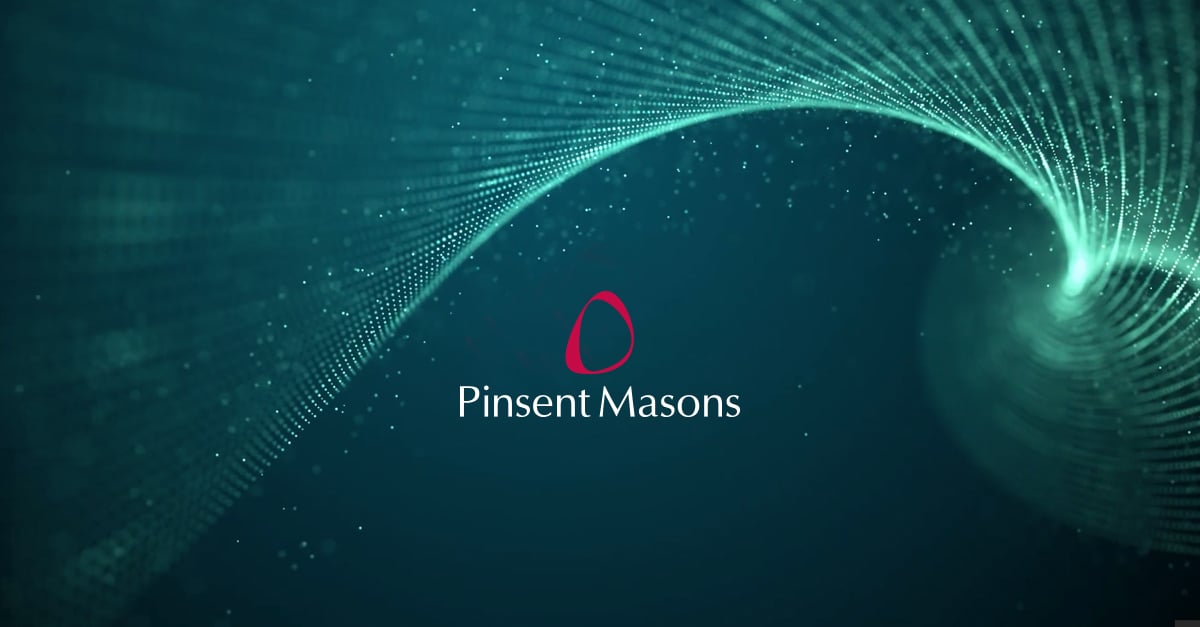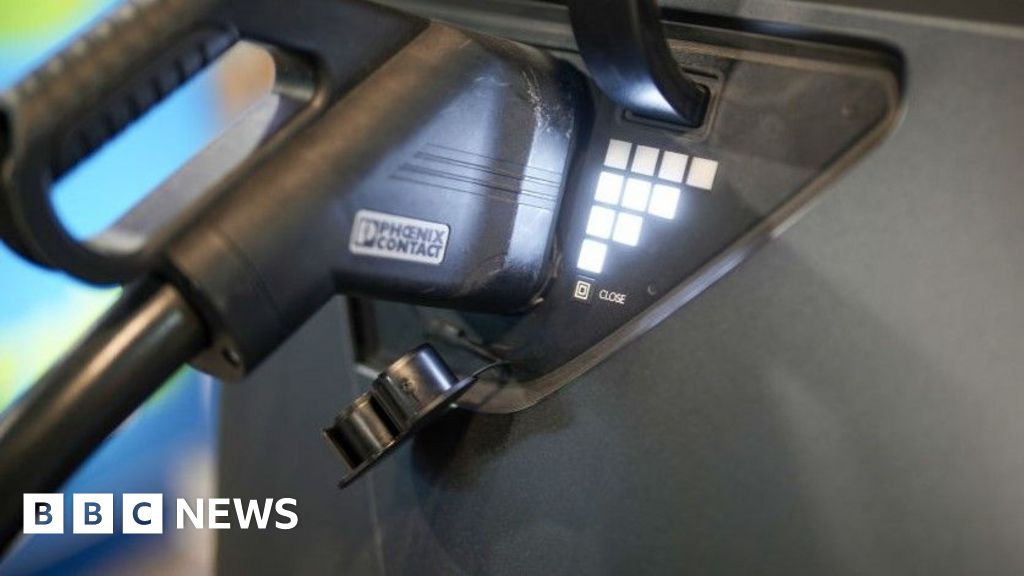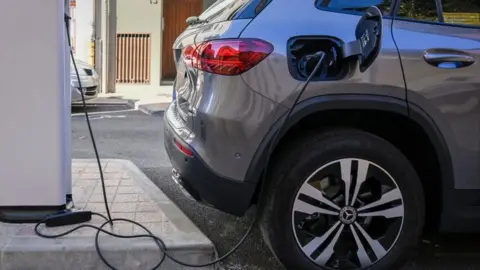Stocks @ Night is a daily newsletter delivered after hours, giving you a first look at tomorrow and last look at today. Sign up for free to receive it directly in your inbox. Here’s what CNBC TV’s producers were watching on Thursday and what’s on the radar for Friday’s session. The diet drugs and the White House President Donald Trump hinted Thursday that a deal was in the works to bring down the price of obesity drugs. Novo Nordisk shares fell almost 4% after hours. The stock is down more than 50% in a year. Eli Lilly is down nearly 5% after hours. Shares are down more than 13% since the March high. The biotechs We’ll be watching biotech stocks and ETFs after investor Kari Firestone, who once ran Fidelity’s biotech fund, said on “Halftime Report” today that she’s seeing a breakout. Her thesis is they’re poised for more “personalized medicine” and while there are issues and reasons for caution, “we are moving into a new era” and these stocks stand to benefit. The First Trust NYSE Arca Biotechnology ETF (FBT) is up 1.25% in four days. The iShares Biotechnology ETF (IBB) is up 2% in four days and up 6.3% in October. The Biotech ETF (XBI) is up 3% in four days and up 7.7% in October. Cathie Wood and Chinese internet stocks Ark Invest just bought the Chinese internet giants Alibaba and Baidu for several of its funds. Baidu shares are 20% from the highs hit just a few weeks ago. The stock is up 40% in three months Alibaba shares are 14% from an Oct. 2 high. The stock is up almost 43% in three months. American Express The credit card company reports Friday morning on “Squawk Box” with Becky Quick and Joe Kernen. Shares are up 3.6% since last reporting three months ago. American Express is 7.5% from the September high. AXP YTD mountain American Express shares year to date. The 10-year falls below 4% We’ll be watching the 10-year closely on “WorldWide Exchange” with Frank Holland, along with the rest of the bond complex. As the 10-year went below 4%, the 2-year is at 3.42%. The 1-year is at 3.55%. The 3-month is at 3.94%. The 1-month is at 4.08%. The iShares iBoxx $ High Yield Corporate Bond ETF (HYG) is yielding 5.72% tonight. The SPDR Bloomberg High Yield bond ETF (JNK) is yielding 6.58%. The iShares 0-5 Year High Yield Bond ETF (SHYG) is yielding 7.06% as of tonight. The regional banks “Power Lunch” anchor Brian Sullivan noted Thursday that the SPDR S & P Regional Bank ETF (KRE) is down for four straight weeks. It is also down six out of seven weeks. (Thanks, Chris Hayes and Gina Francolla.) It is currently 17% from the 52-week high hit back in November. Shares are down 9% in a month. Ally Financial , Comerica , Fifth Third , Huntington Bancshares , Regions Financial and Truist all report Friday morning. Ally shares are 14% from its September high, but are up 4% in four days. Comerica, which is being bought by Fifth Third, is up 8% so far in October, but still 11% from its Oct. 6 high. Fifth Third, which is buying Comerica, is 18% from its November high. The stock is down 9.4% in October. Huntington Bancshares is 16% from its high on Nov. 25, 2024. The stock is down 11% in October. Regions Financials is 17% from its November 2024 high. The stock is down 11.5% so far this month. Truist is 16% from the high on Nov. 25, 2024. The stock is down 10% so far this month. KRE 3M mountain The SPDR S & P Regional Bank ETF (KRE) over the past three months. Gold’s run The metal keeps hitting new highs. It is having its best week since March 2020 — pandemic times. (Thanks also to Gina Francolla for that one.) It is up 29% in two months. The VanEck Gold Miners ETF (GDX) is up 11.7% in five days.
Blog
-

Updating HR practices in China to comply with unified approach to labour disputes
Interpretation II on the Application of Law in the Trial of Labor Dispute Cases by the Supreme People’s Court of the People’s Republic of China came into effect on 1 September, with the aim of unifying China’s legal framework and offer consistent guidance for handling labour disputes nationwide.
The primary objective of Interpretation II is to promote stability in labour relations and the broader market, while striking a fair balance between the rights and obligations of employers and their employees. However, some provisions do not fully align with local approaches, so employers should closely monitor legislative developments and judicial trends in the provinces and cities in which they operate. They should also proactively review their own HR policies to ensure compliance with the best practices indicated by the Supreme People’s Court.
Multi-entity employment within affiliated enterprises
Interpretation II clarifies that when an employee works for multiple affiliated entities, whether alternately or concurrently, without a written labour contract, courts may recognise the existence of a labour relationship based on the actual conduct of both the entities and the employee.
This assessment may include, but is not limited to, factors such as working hours, job responsibilities, wage payments and social insurance contributions. Additionally, courts may support claims requiring affiliated entities to jointly bear responsibility for wages and benefits, unless a valid agreement has been established between the employee and the affiliated entities that clearly allocates these obligations.
Foreign nationals with permanent residency
Interpretation II affirms that foreign nationals with permanent residency in China can establish labour relationships with PRC employers without the need for a separate work permit.
This aligns with recent practices adopted by the national immigration administration and human resources authorities. However, it is important to note that the Ministry of Public Security retains the authority to revoke permanent residency under certain circumstances, which could affect the individual’s eligibility for employment in China.
Consequences of non-payment of social insurance
Under applicable laws, employers who fail to pay social insurance contributions are not only required to make retroactive payments, but may also face claims from employees for losses related to social insurance benefits. In addition, employees are entitled to terminate a labour contract on the basis of an employer’s failure to pay social insurance contributions, and to seek severance compensation.
In practice, some employers and employees enter into agreements to waive social insurance contributions, with employees instead receiving corresponding subsidies from the employer. However, disputes frequently arise when employees exit the company and pursue legal action for unpaid social insurance. Prior to the issuance of Interpretation II, the handling of such cases varied in local courts. In situations where an employee had explicitly agreed to waive social insurance contributions, some courts upheld the employee’s right to terminate the contract and claim severance, while others rejected this type of claim on the grounds that it violated the principle of good faith.
Interpretation II explicitly states that any agreement or waiver by an employee regarding the non-payment of social insurance is invalid. Employees retain the right to terminate the labour contract and claim severance compensation, however, if the employer subsequently fulfills its legal obligation by making the required contributions, it may request the employee to return any social insurance subsidies previously received. This provision is intended to strike a fair balance between the rights and obligations of both employers and employees.
Failure to sign written labour contracts
Under Interpretation II, if a written labour contract is not signed due to unexpected events preventing a party from fulfilling their contractual obligations, the employee’s intentional delay, gross negligence or other legally recognised circumstances, the employer is not liable for the statutory penalty of double wages. This aligns with prior judicial practice in many regions, where courts have exempted employers from penalties in cases where the employee deliberately avoided signing the contract, particularly when the employee held a senior management or HR position.
The interpretation further clarifies that automatic contract extensions triggered by statutory circumstances, such as medical leave, maternity leave, agreed service periods or union duties, do not require the employer to re-execute a labour contract.
Additionally, if an employee continues working after the contract has expired and the employer does not raise any objection within one month, the employee may request that the contract be renewed under the original terms. Once the renewed contract expires, the employee may further request the establishment of an open-ended labour contract. This provision expands the scenarios in which employers are obligated to offer open-ended contracts, representing a substantive shift from previous local practices.
Overall, Interpretation II aims to prevent the abuse of labour rights while also raising employer standards around the entire process of labor contract execution and termination.
Non-fixed term contracts and anti-evasion measures
Interpretation II clarifies that the expiration of a second fixed-term contract will occur when:
- the employer and employee agree to amend the contract, extending the contract term for a cumulative period of one year or more, and the extension subsequently expires;
- the contract is automatically extended upon expiration, and the extension period expires;
- the employee continues working in the same role and location, but the employer changes the contracting entity while maintaining management over the employee; and
- there is any other conduct that violates the principle of good faith and is intended to circumvent the obligation to offer a non-fixed term contract.
These provisions are designed to prevent employers from evading their statutory obligation to offer an open-ended employment contract after two consecutive fixed-term contracts. Notably, the first scenario relaxes previous requirements in some regions, where local courts deemed any extension as constituting a second fixed-term contract. This adjustment grants employers some flexibility before being required to offer a non-fixed term contract.
Service period agreements with special benefits
Interpretation II stipulates that when an employer provides special benefits beyond the regular salary and bonus scheme in exchange for a service period commitment, and the employee breaches the agreement without a lawful reason, the court may determine compensation based on actual losses, the degree of fault and the length of service already performed.
Previously, employees were generally permitted to resign with 30 days’ notice, regardless of any service period commitment in the employment contract. Compensation for breaching a service period agreement was typically enforceable only if the employer had invested in training the employee, and that compensation was usually limited to the cost of training.
Interpretation II expands the enforceability of service period agreements. In practice, employers often offer benefits such as household registration assistance, signing bonuses, housing, or equity incentives to attract and retain talent. However, due to the lack of clear legal provisions, enforcement of these agreements has previously varied across regions, and employers have often faced challenges when seeking to recover losses from employees who breach service period commitments. Interpretation II now provides a clear legal basis for employers to recover their losses in these circumstances.
Scope and reasonableness of non-compete clauses
Interpretation II provides that non-compete obligations do not apply to employees who have not accessed or been exposed to the employer’s trade secrets or intellectual property. These employees may challenge the validity of any non-compete agreement that they have signed. The scope, geographic coverage and duration of non-compete clauses must be proportionate to the employee’s actual exposure to confidential information and any excessive provisions will be deemed invalid.
Courts are increasingly scrutinising the reasonableness of non-compete clauses, recognising that overly broad restrictions can significantly impact an employee’s ability to work. Interpretation II reinforces the need for tailored and proportionate clauses that protect legitimate business interests without unduly restricting employment rights. This development sets a higher standard for employers when drafting non-compete agreements. A brief and generic non-compete clause embedded within a standard employment contract may no longer be effective.
Proactive steps
Some provisions in Interpretation II may not fully align with existing local regulations or judicial practices in some regions. It is not yet clear which local authorities will revise their rules and practices to conform with the Supreme People’s Court’s guidance, or whether transitional arrangements will be introduced.
Until there is further clarity, employers should closely monitor legislative developments and judicial trends in their respective provinces and cities. By proactively aligning internal policies with these recommendations, employers can reduce the risk and cost of labour disputes by introducing preventive measures and management mechanisms.
Multi-employment and secondment
For employees working across multiple affiliated companies or on secondment, labour contracts should clearly specify the legal employer, the employee’s roles and responsibilities in respect of other entities, allocation of wage payments, social insurance and other employment obligations.
Autorenewal and open-ended contracts
To manage risks related to automatic renewals and open-ended contracts, labour contracts should be signed before the employee’s start date. HR systems should be used to track contract start and end dates, extension periods, and the number of times contracts have been signed.
Contract expiration
Automated alerts should be set two months prior to the expiration of a contract or any extension period, and employers should issue formal reminders to employees who refuse to sign. Automatic renewal clauses in employment contracts should be avoided, and all related communications should be retained.
Invalidation of non-compete agreements
To avoid invalidation of non-compete agreements:
- use standalone non-compete agreements for key personnel, such as executives, technical experts and sales leads, and avoid including broad, ‘one-size-fits-all’ non-compete clauses in standard employment contracts;
- tailor the scope, geographic coverage, and duration of non-compete restrictions to the employee’s actual access to confidential information;
- retain evidence of the employee’s access to confidential information; and
- periodically review and update non-compete agreements to ensure their continued relevance and enforceability.
Paying social insurance.
To manage the risks associated with failure to pay social insurance, employers should review historical agreements to identify whether there are any non-payment cases, understand the reasons for non-payment, assess the seriousness of the situation, and determine what agreements have been made with employees regarding such non-payment. Employers should also develop remedial plans for unpaid contributions to minimise future disputes.
Special benefits
When offering special benefits in exchange for a service period commitment, enter into a special agreement that clearly specifies any special benefits are offered as consideration for the employee’s commitment to a defined service period, and that such benefits constitute additional payments beyond regular salary and bonus.
Breach of contract
Currently, ‘loss compensation’ is used as the solution for breach of contract. As a result, the company should retain relevant payment records and supporting documents to substantiate any actual losses incurred due to an employee’s breach.
Continue Reading
-

Austin hosts the latest chapter in F1’s 2025 title race as the Sprint format returns
Formula 1 has swapped Singapore for Austin as the 2025 season continues with the United States Grand Prix – and our F1 TV team are here to preview all the Sprint weekend action.
At the top of the agenda is the aftermath of the coming together…
Continue Reading
-
Tough battles unfold as men’s pool play serves off in Puebla
In the longest men’s match of the day in Puebla, Czechia’s Vojtech Pavlusek & Vojtech Votava squeezed out a thrilling 2-1 (21-13, 18-21, 16-14) victory over Namibia’s Max Krafft & Jura Krafft. The Africans were actually first to reach match…
Continue Reading
-

How to Mute Meta AI in Meta Apps
If you’re one of the billions of people who use Meta apps, you’ve more than likely seen or interacted with Meta AI. Its presence in popular apps like Facebook, Instagram and WhatsApp feels significantly less useful than something like the new
Continue Reading
-
expert reaction to conference abstract on prostate cancer screening in those with BRCA1 and BRCA2 gene mutations
A conference abstract presented at the European Society for Medical Oncology (ESMO) 2025 meeting looks at…
Continue Reading
-

Moderators call for AI controls after Reddit Answers suggests heroin for pain relief
We’ve seen artificial intelligence give some pretty bizarre responses to queries as chatbots become more common. Today, Reddit Answers is in the spotlight after a moderator flagged the AI tool for providing dangerous medical advice that they were…
Continue Reading
-

How to tell the health of a battery in a used EV
Chris BaraniukTechnology Reporter
 Corbis via Getty Images
Corbis via Getty ImagesBattery health is a top priority for buyers of used EVs When Kerry Dunstan and his partner set out to buy a new electric car this summer, one of the questions they asked was, “How’s the battery?”.
They’d found a 2021 Nissan Leaf with just 29,000 miles on it, and the dealer told them the condition of the battery, or its state of health (SOH), was still around 93%.
The couple were sold. For £12,500, they got an EV with a big boot and plenty of room for passengers.
Though Mr Dunstan, a cabinetmaker who also owns a somewhat snazzier electric Volvo SUV, hasn’t quite fallen in love with the aging Leaf.
“I like sporty, jazzy cars – and it’s just a bit ‘meh’,” he says.
However, he adds the Leaf has performed exactly as expected during the three months they’ve owned it.
It used to be that age and mileage were the two headline details pored over by would-be buyers of second-hand cars. But as more people shift to electric, scrutinising the health of a car’s battery has become arguably even more important.
How has that battery been treated? Did the last owner regularly fast charge it to 100%, for example? That has the potential to shorten an EV battery’s lifespan.
This battery black box problem has put some consumers off buying a second-hand EV. But battery analytics firms say they can reveal the condition of an old EV’s battery with high accuracy. And industry experts say some EVs are lasting longer than many predicted.
Take Mr Dunstan’s Nissan Leaf. This is a model of EV built without the kind of sophisticated, liquid-based battery cooling system common to many other EVs. While Nissan has rectified this in the latest generation of Leafs, earlier models show a considerable shortening of their range year by year, according to data analysed by US insurance and research firm NimbleFins.
Mr Dunstan is unfazed. “I charge both my EVs to 100% and I put them on charge when I need to charge them – I don’t worry about it,” he says.
 Kerry Dunstan
Kerry DunstanThe performance of Kerry Dunstan’s used EV has met his expectations For people in the market for a second-hand EV who are plagued by battery anxieties, however, Austria-based firm Aviloo says it has a solution. “We really can, completely independently, determine the state of health of a battery,” says chief product officer, Patrick Schabus.
Aviloo is one of several battery analytics businesses in the market. The company, which provides battery health certificates for major UK outlet British Car Auctions, offers two products.
There’s a premium test, where EV owners plug a data logging box roughly the size of a glasses case into their car so that it can monitor battery performance while they use the car over a few days, going from 100% charge down to 10%.
Or, they can opt for a quicker flash test, which uses a different box to suck up data from the car’s battery management software and then analyse it with the help of a computer model. “We can do this at a standstill in under two minutes,” says Mr Schabus.
The premium test observes battery discharge closely, picking up fluctuations in current or voltage, and can reveal extra detailed information about the health of individual cells in the battery, says Aviloo.
Marcus Berger, Aviloo’s chief executive, says his company’s analytics results sometimes diverge “substantially” from the battery SOH percentages produced by some cars’ own built-in analytics systems.
He challenges conventional wisdom that batteries with an SOH below 80% are too far gone: “An EV with a state of health below 80% can still be a great car… It just needs to be priced [appropriately].”
In New Zealand, EV owner Lucy Hawcroft, who works in a sustainability role for an infrastructure firm, bought a Nissan Leaf with her husband roughly three years ago. She recalls getting an SOH result of 95% or so from the dealership. But a year later an independent mechanic checked the SOH again for them.
“It dropped quite a bit,” she recalls. “My husband was a bit surprised, or concerned, about that.”
However, the car still has a range of around 160km (100 miles) when fully charged. The pair mostly use it for short journeys of up to 10km. Mrs Hawcroft says she has friends whose EVs have much bigger ranges, of around 400km: “That would be ideal.”
For David Smith, sales director at Cleevely Electric Vehicles in Cheltenham, being able to analyse used EVs’ batteries in detail is a deal-maker. Most customers ask for this information, he says. His company uses SOH reports from ClearWatt, another battery analytics firm.
“They’re completely independent. We can’t interfere with the reports,” he says. “Once customers have seen the report, that aids the sale nine times out of 10.”
Matt Cleevely, managing director at Cleevely Electric Vehicles, adds that it’s often possible to replace groups of cells or modules within a battery pack – far cheaper than installing a whole new battery.
 Lucy Crawford
Lucy CrawfordLucy Crawford was surprised by the drop off in battery health of her EV As for how you should charge your own EV in order to best take care of its battery, Simona Onori at Stanford University says, “There is likely a sweet spot between frequent fast charging and avoiding it altogether.” However, she adds that, to her knowledge, this is not something that has yet been thoroughly studied.
Despite some consumers’ wariness, battery technology has noticeably improved in recent years, says Max Reid, head of battery costs at market research firm CRU. “The older batteries might last maybe 500 to 1,000 [charging] cycles,” he explains. “Now, it’s 10,000 cycles in some of these new EV cells coming out.”
Batteries that are no longer good enough for the EV they were designed for can still be useful, says Paul Chaundy at Second Life EV Batteries, in Dorset. For instance, some of his customers are businesses that use former EV batteries to store electricity at their premises. They might have, say, six electric forklifts but a grid connection only large enough for charging ports to supply two or three of the forklifts.
Regarding the varying methodologies car manufacturers use to generate SOH reports for their own vehicles, Mr Chaundy says, “We need more standards around that, I think.”
More Technology of BusinessContinue Reading
-

Centrica and Holland & Barrett fined for underpaying staff
British Gas’s parent company Centrica, Euro Garages and Holland & Barrett are among the latest companies named and shamed by the government for underpaying staff.
The Department for Business and Trade (DBT) has released a list of nearly 500 employers fined more than £10m for failing to pay the national minimum wage. It said 42,000 workers were repaid more than £6m.
Business Secretary Peter Kyle said: “I know that no employer wants to end up on one of these lists. But our Plan to Make Work Pay cracks down on those not playing by the rules.”
All three firms blamed past payroll problems for the underpayments and said all affected staff had been remunerated.
All the employers named on DBT’s list were fined up to double the total amount they owed to staff, some for underpayments dating as far back as 2013.
Paul Nowak, the TUC general secretary, said there was “no excuse for workers being cheated out of money they’re owed. It’s bad for workers, families and the economy.”
According to the government’s latest investigations between 2018 and 2023, Euro Garages, known as EG Group, is top of the list short-changing 3,317 of its workers by a hefty sum of more than £824,000.
The company, which was co-founded by billionaire brothers Mohsin and Zuber Issa but who have since stepped back from leading the firm, has significantly reduced its UK operations over the past year.
It sold its UK petrol forecourts business and Cooplands bakeries, but still runs some Starbucks franchise stores across the UK.
In a statement, an EG Group spokesperson said: “These historic payroll issues that took place between 2015 and 2019 have been fully rectified.
“All affected employees were subsequently reimbursed in full in agreement with HMRC.”
The firm said it improved its systems to make sure it complied with UK laws and maintained that it was committed to treating employees fairly.
Centrica, which owns British Gas, was eighth on DBT’s list having failed to pay £167,815 to 356 workers.
The energy giant recently bought one of the biggest liquefied natural gas (LNG) facilities in the UK for £1.7bn, extending the firm’s control of the country’s energy supplies.
A Centrica spokesperson said the company supported fair pay and pointed to technical faults in its payroll system between 2015 and 2019.
“This issue relates to a small number of historic technical errors which was put right as soon as it was identified.
“The total underpayment related primarily to salary sacrifice arrangements and training bonds, rather than take home pay, and was around £160,000 – our UK annual wage bill is currently around £1.2bn.”
High street retailer Holland & Barrett is next on the list after it failed to pay more than £153,000 to 2,551 workers.
In a statement, the company said past issues with minimum wage payments, between 2015 and 2021, had since been fixed in 2022.
“This was not a case of deliberate underpayment,” said a spokesperson.
“The issue stemmed from legacy practices such as requiring team members to wear specific shoes, unpaid training completed at home, and time spent preparing for shifts at our Burton distribution site.”
Holland & Barrett said it remained “committed to fair pay” and that it was paying store staff about 5% above the National Living Wage and follows all rules.
“While we respect the transparency of the scheme, we are disappointed that naming has occurred over three years after the matter was settled.”
The minimum wage for over 21s, known officially as the National Living Wage, is currently £12.21 an hour. Younger employees – aged between 16 and 20 – are entitled to receive the National Minimum Wage, which is set at £10 and hour.
Continue Reading
-
Geopolitical shifts, uncertainty, and investment: Evidence from the EIB Investment Survey 2025
Global geopolitics has been a tremendous source of uncertainty in 2025. Compounding the uncertainty has been questions about the short-term and permanent impact these changes will have on the real economy, particularly on trade and private-sector investment. Major forecasters have been revising their forecasts, as the underlying assumptions about the impact of US tariffs change. For the EU, growth projections were considerably revised downward in the spring (European Commission 2025), but now the consensus seems to be shifting, recognising a better than expected economic performance in the short term. The lack of strong EU retaliation on US tariffs, the partially reduced uncertainty due to the trade agreements, the potential opportunities emerging from a multi-polar system, and a boost to public investment (for defence) are leading most institutions to revise their growth expectations slightly upwards (Lagarde 2025; OECD 2025, IMF 2025). But what is happening to investment by European firms? How are they responding to the changed trading environment and other political shifts, such as the Trump administration’s position on climate change? How do the reactions of European firms differ from those in the US?
The 2025 edition of the European Investment Bank Investment Survey (EIBIS) sheds some light on these questions (EIB 2025). Conducted annually since 2016, the EIBIS is a unique survey of approximately 13,000 firms across all 27 EU members, with an additional sample from the US. The survey collects data on the characteristics and performance of firms, past investment activities and future plans, sources of finance, financing issues, and other challenges such as climate change and digital transformation. Interviews for the 2025 edition of the survey were carried out over the summer.
Investment by firms has proved resilient so far
After several years of acceleration, the investment appetite of European and American firms is weakening (Figure 1). However, instead of the feared collapse, investment seems to be stabilising as firms continue to invest. The share of EU firms investing remained roughly stable at 86%, compared with 87% in last year’s survey. A marginally higher share of EU firms still expects to increase rather than decrease investment in 2025, although this indicator also points to an easing of investment growth. The pattern in the US is broadly similar, but US firms’ expectations have been revised down from a much more buoyant level.
Figure 1 Investment cycle and evolution of investment expectations
Source: European Investment Bank – EIBIS 2021-2025.
Investment activities differ on the two sides of the Atlantic. While EU firms are more likely to invest in replacing capacity, US firms are looking to expand. In the EU, firms have devoted a significant portion of their investment (35%) to intangible assets (such as research and development, training, and software), investing less in land, buildings, and infrastructure than US firms (17 versus 22%). Over the next three years, EU firms will continue to prioritise investment that replace rather than expand capacity, with the share of firms investing to expand operations 11 percentage points below that of the US (26% of EU firms versus 37% of US firms).
While EU firms continue to invest, they have a negative outlook on the political and regulatory environment and the overall economic climate, with more firms expecting the situation to deteriorate rather than improve in the next 12 months. They also have a balanced view of the business prospects in their sector (Figure 2). In the US, firms are neutral on the political climate (on balance) and somewhat positive on business prospects and the general economic climate.
Figure 2 Firm perceptions of short-term investment drivers and constraints
Source: European Investment Bank – EIBIS 2018-2025.
Note: (*) Net balance is the share of firms expecting an improvement minus the share of firms anticipating a deterioration. Negative values thus imply that more firms expect a deterioration than an improvement.Adjusting supply chains: US firms focus on domestic sources while EU firms balance efficiency and resilience
The trade views of EU and US firms differ widely, as well as the economic impacts across various countries (Kawasaki 2025). Among firms engaged in trade, US firms are markedly more concerned about changes in customs and tariffs than EU firms (77% versus 48%). The share of concerned firms in the US has doubled, while in the EU the increase has been marginal (Figure 3). Tariffs have dominated the news, but compliance with new regulations, standards, or certifications remain a concern for many firms. Concerns about other supply chain disruptions have continued to ease in the EU and the US.
Figure 3 Obstacles related to external trade
Note: * Base: All firms; ** Base: All importers and exporters
Source: European Investment Bank – EIBIS 2024-2025.The tariff shock immediately affected US supply chains, leading firms to look for domestic suppliers and retrench on trade. With government policies that encourage domestic production and expectations that tariffs will make imports more expensive, a relatively high share of US firms are increasing inventories, substituting imported goods for domestic ones, and diversifying the countries from which they import. EU firms, by contrast, are adopting a more measured approach, balancing efficiency and resilience in their supply chains: only 7% of European firms are engaging in import substitution strategies, reducing their share of imported goods and services, while 19% are diversifying the number of countries from which they import.
Figure 4 Changes in sourcing strategy
Note: Base: All firms; *Base: All firms that import
Source: European Investment Bank – EIBIS 2024-2025.Green transition: EU firms stay the course
EU firms appear more aware of the consequences of the net zero transition than their American counterparts (Figure 5). When looking at transition risks, EU firms are aware of risks (particularly in Eastern Europe and in some of the Central European countries) and slightly more aware of the opportunities the transition presents (particularly in Northern Europe).
As a result, 92% of EU firms have taken action to reduce greenhouse gas emissions, a much higher share than in the US across various investment categories. A higher share of EU firms is investing in waste minimisation, energy efficiency, sustainable transport, renewables, and green innovation. EU firms, particularly larger ones, are also more likely to have performed energy audits or to have their own greenhouse gas emission targets. One notable fact is that the share of US firms that see the transition to a net zero emission economy as a risk has significantly declined since 2024.
Figure 5 Firm perceptions of the impact of the green transition over the next five years
Note: Base: All firms (excluding don’t know/refused responses)
Source: European Investment Bank – EIBIS 2024-2025.Firms are more aware of the physical risks associated with climate change and are slowly starting to act on climate adaptation. On both sides of the Atlantic, the share of firms faced with costs from extreme climate-related events is high: 68% in Europe, and 64% in the US. The share of firms acting to deal with physical risks has increased steadily and is relatively similar (55% in the US, 53% in the EU), however, US firms are more likely to have implemented adaptation strategies or investments. The number of firms investing in adaptation is increasing.
EU firms are investing in digitalisation and AI, but could benefit from applying new technologies more widely
EU firms have accelerated their adoption of advanced digital technologies to the extent that they their adoption rate now matches those of US firms. This trend is particularly strong in large firms and in the manufacturing sector. A new question in this the EIBIS 2025 survey shows that the adoption rate of generative AI technology is roughly the same on both sides of the Atlantic, at 37% in the EU versus 36% in the US. However, US firms that use big data or AI technologies tend to apply them across more business areas than their European counterparts, highlighting a continuing challenge for adoption in Europe (Figure 6).
Figure 6 Business areas in which AI tools are used (% of firms)
Source: European Investment Bank – EIBIS 2024-2025.
Simplification and integration of the EU Single Market present opportunities
The 2025 survey underlines the importance of simplifying regulation, procedures and market access in the EU. Time spent meeting regulatory requirements is significant for EU firms, with the cost estimated at some 1.1% of companies’ turnover, and as much as to 1.8% among small and medium enterprises.
Deepening the Single Market remains equally vital to enhancing the EU’s competitiveness: 62% of EU firms perceive the EU market as fragmented for their main product, a share unchanged from 2024. Many barriers remain a drag on investment by firms. Uncertainty remains the most frequently cited barrier, weighing even more on EU than US firms (83% of EU firms are concerned, compared with 68% of US firms). Availability of skills comes second for EU firms (79%), followed by energy costs (75%) and business regulation (69%). Energy costs remain much more of an impediment for firms in the EU than in the US.
Alongside simplification and market integration, policy incentives also matter. Especially in a period in which policy support needs to balance the strategic priorities with considerations related to debt sustainability (Bouabdallah et al. 2025). Overall, 16% of EU firms that invest were supported by EU policies, compared to 13% among US firms. EU firms have better access to finance at favourable rates than US firms, and comparable access to grants and subsidies. The EIB Investment Report (EIB 2025b), released in March 2025, showed that targeted policy support is more effective. In the EU, policy support tends to be more targeted and ‘greener’ – indeed, policy support is more likely to be linked to a specific objective (61% in Europe, compared with 43% in the United States), with the green economy and innovation being the main policy priorities.
References
Bouabdallah, O, E Dorrucci, C Nerlich, C Nickel and A Vlad (2025), “Time to be strategic: How public money could power Europe’s green, digital, and defence transitions”, VoxEU.org, 29 July.
EIB (2025a), EIB Investment Survey 2025: EU Overview.
EIB (2025b), Investment Report 2024/2025: Innovation, integration and simplification in Europe.
European Commission (2025), Spring 2025 Economic Forecast: Moderate growth amid global economic uncertainty.
IMF (2025), World Economic Outlook Update, July 2025: Global Economy: Tenuous Resilience amid Persistent Uncertainty.
Kawasaki, K (2025), “Economic impact of US tariff hikes: Significance of trade diversion effects”, VoxEU.org, 15 September.
Lagarde, C (2025), “Trade wars and central banks: lessons from 2025”, speech by Christine at the 4th Bank of Finland International Monetary Policy Conference, 30 September.
OECD (2025), OECD Economic Outlook, Interim Report: Finding the Right Balance in Uncertain Times, September.
Continue Reading

